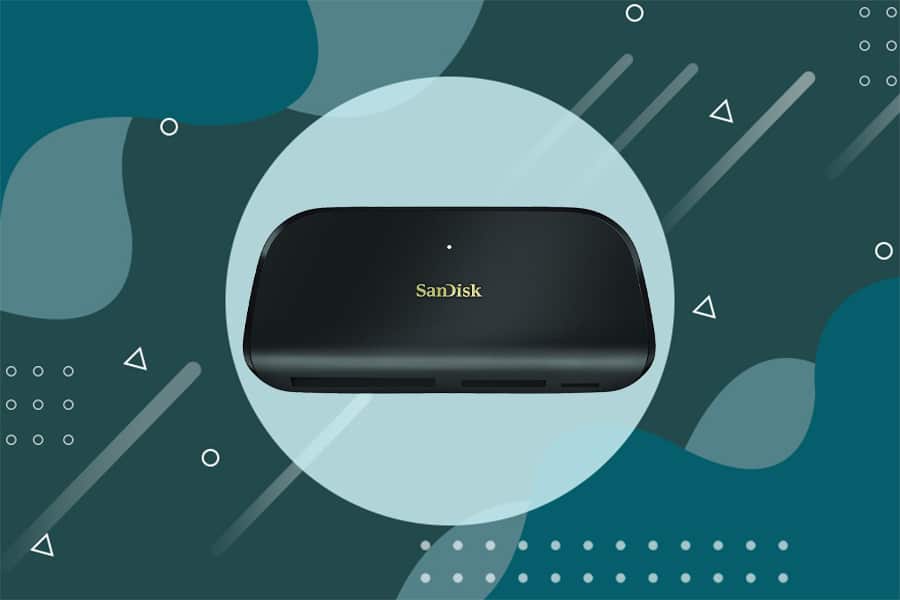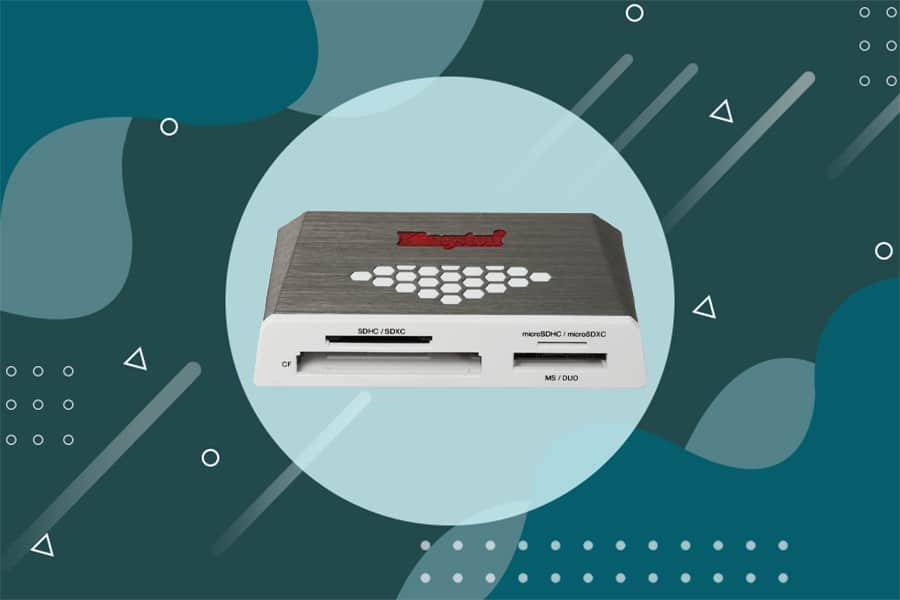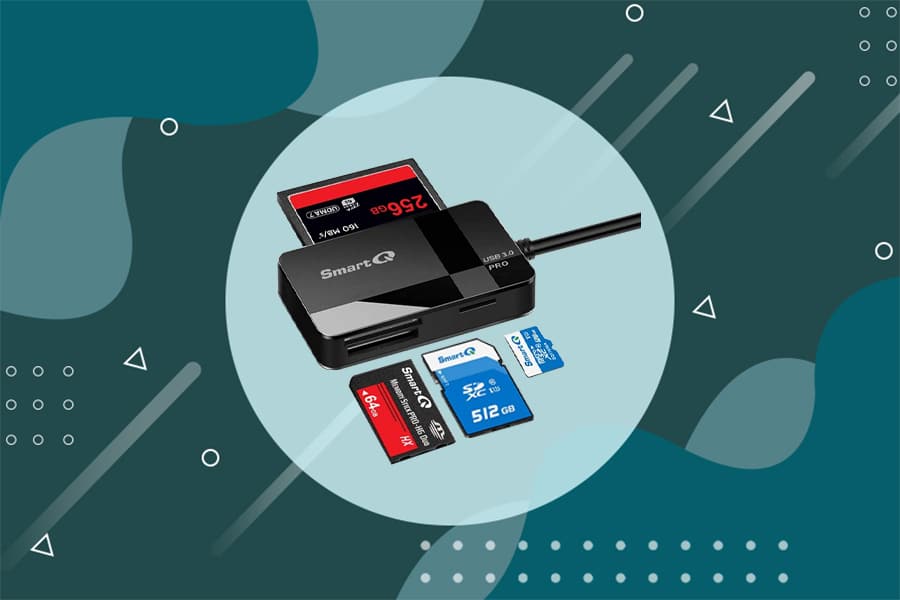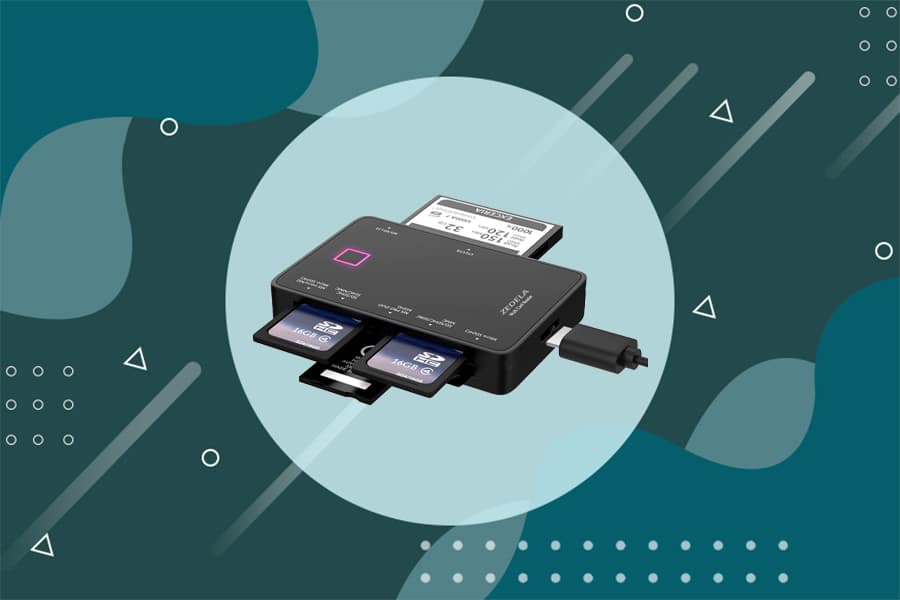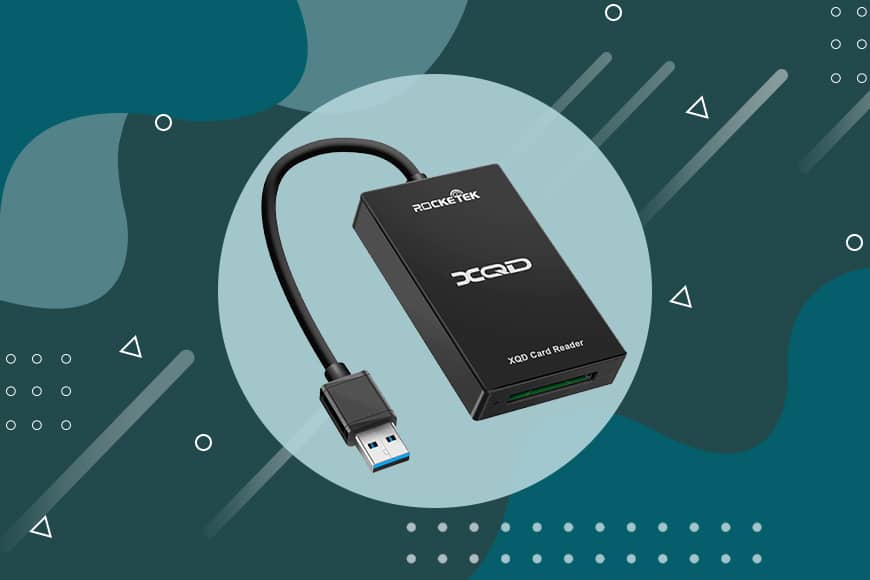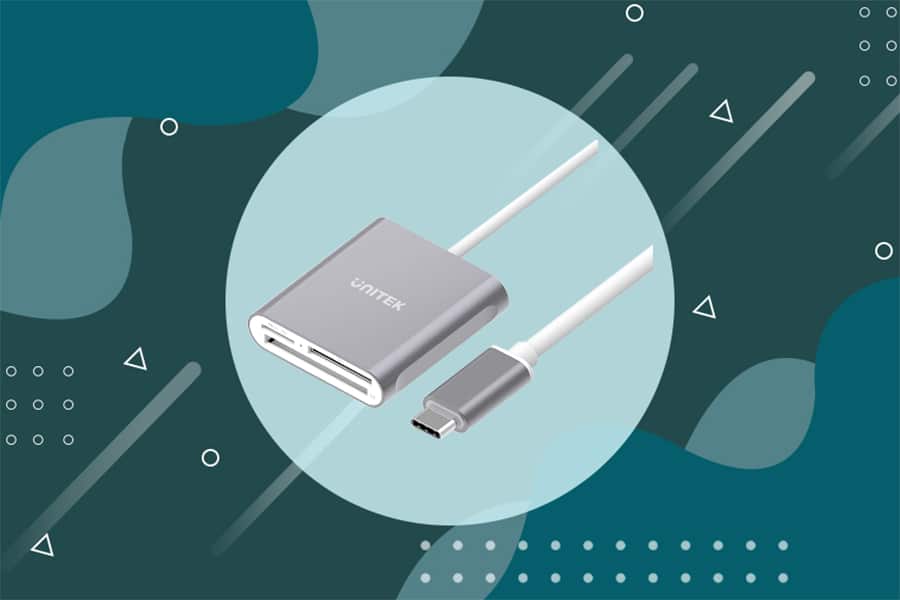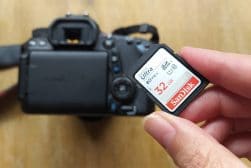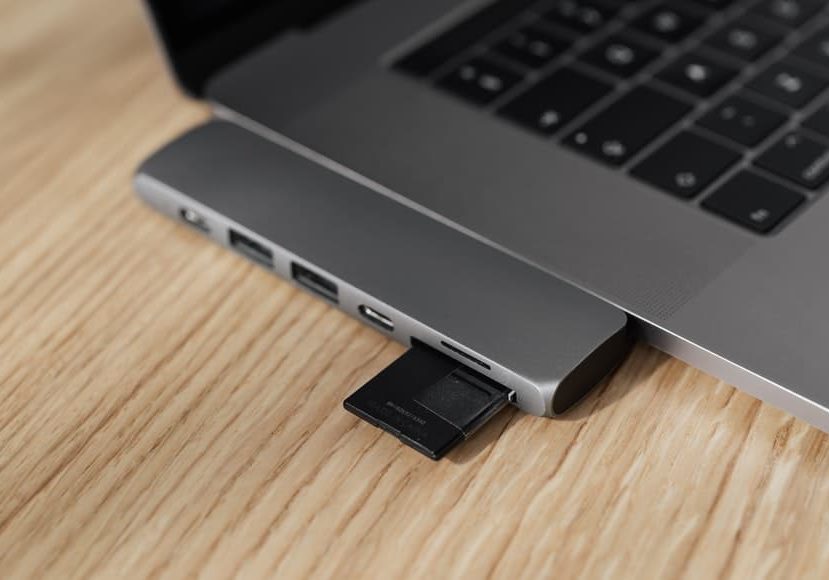
Best Memory Card Reader for Fastest Transfer Speeds in 2023
Need a quick way to get your photos & videos off your camera? Check out our guide to the 10 best memory card readers of the year (includes budget options).
In our tests, these are the best memory card readers of the year based on fast transfer speeds, robustness, value for money and ease of use.
Memory cards come in all formats – the most popular among photographers being SD, CF (including CFExpress) and XQD.
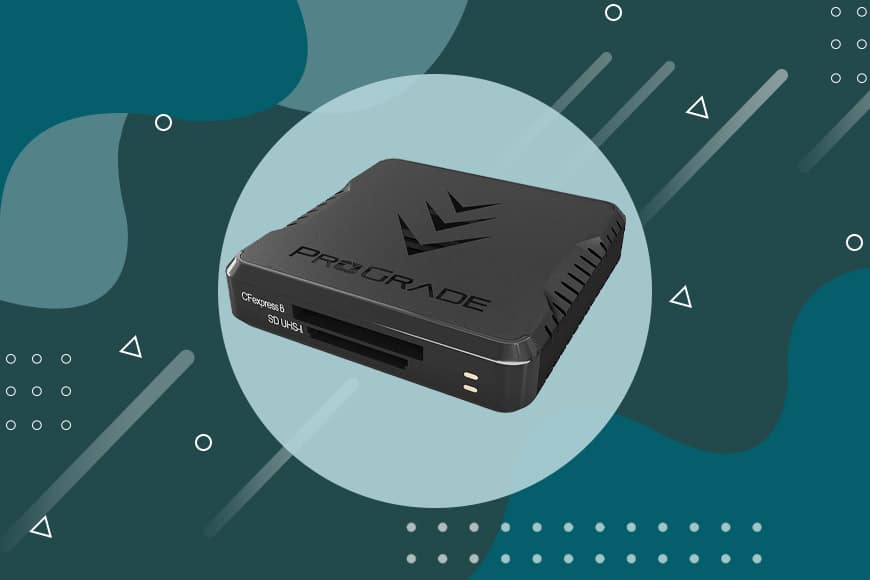
Professional grade card reader with fastest dual card simultaneous transfer speeds, compact size and a unique magnetic laptop-attachable design.
Whatever type of memory card you’re using for your digital camera and smartphone, this guide will help you choose the best product – just remember to format your cards to preserve optimal performance.
There are hundreds of SD card readers available on the Internet, but be cautious about buying any brand without plenty of good reviews – in our testing, we found that using inferior SD card readers led to transfer issues, particularly with larger files.
So if you want to supercharge your data transfer speeds, read on!
Table of Contents
Best Memory Card Readers for SD, CF & XQD Cards in 2023
| Image | Product | Features | |
|---|---|---|---|
 | ProGrade CFexpressOUR #1 CHOICE |
| View Price → |
 | SanDisk ImageMateHIGHLY RECOMMENDED |
| View Price → |
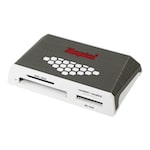 | Kingston DigitalGREAT VALUE |
| View Price → |
 | UGREEN 4-cardBEST BUDGET |
| View Price → |
 | SmartQ C368 |
| View Price → |
 | Zedela 7-in-1 |
| View Price → |
 | Anker 2-in-1 |
| View Price → |
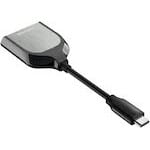 | SanDisk Extreme PRO |
| View Price → |
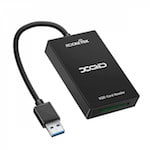 | Rocketek XQD |
| View Price → |
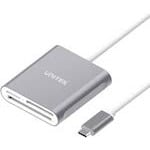 | Unitek USB |
| View Price → |
1. ProGrade CFexpress Type B and SD UHS-II Dual-Slot
- Speed
- Reliability
- Contemporary data transfer at full speed
- Portability
- High price
- Accepts only two formats
This is a professional quality card reader with the latest versions and standards to ensure the highest transfer speed available today.
It supports a USB 3.2 Gen 2 USB speed with a USB Type-C connection with data transfer speeds up to 1.25Gbps – that’s a ton of data! If you’ve invested in a larger capacity memory card like 256GB, you’ll need a reader that can transfer the images and video over as fast as possible.
The ProGrade features two slots – one for CFexpress and one for SD cards class UHS-II. Most impressively, it can transfer data from both of them simultaneously at full speed.
If you’re always on the go, you’ll enjoy its compact size (68 x 68 x 19mm) and the built-in magnet that attaches to your laptop computer to build a slimline portable workstation.
It has the highest quality and reliability from ProGrade and comes with a two-year warranty.
If you own either supported memory card format (or better still, both of them), the ProGrade is a smart choice for photographers wanting the most efficient workflow.
2. SanDisk ImageMate PRO USB-C Reader/Writer
- Good value for money
- Reliability
- CF, SD and microSD slots
- USB 3.0
- A bit bulky
SanDisk is one of the most reliable SD card and CF memory card manufacturers – so, you can rest assured about the quality of the device, which also comes with a two-year warranty.
It measures just 122 x 58 x 17 mm and has three slots to support the most popular card formats: CompactFlash, SD card and microSD card. This makes it perfect for most amateur and professional photographers.
The transfer speed reaches up to 312MB/s on SD and micro SD cards and up to 160MB/s on CF cards with a USB 3.0 interface – it’s also compatible with USB 2.0.
This is a multi-card reader that makes your workflow fast and efficient at a very fair price.
3. Kingston Digital USB 3.0 SuperSpeed Multi-Card Reader
- Four slots
- USB 3.0
- Portable
- 2-year warranty
- USB Type-A connection
This multi-card reader has four slots to support most of the types of memory card available on the market in 2023 – CF, SD card, microSD and MS compatible with all the latest standards.
It has a unique design with a white/brushed 93 x 52 x 16mm nickel case. It’s not as compact as other memory card readers. However, it’s very small considering it has four slots – including CompactFlash, one of the biggest card formats.
The connection speed is USB 3.0 via a USB Type-A detachable cable – it’s also backward compatible with USB 2.0. It has a two-year warranty and free technical support.
4. UGREEN 4-card Simultaneous SD Card Reader
- Price
- 4 card slots
- Compact
- USB 3.0
- Built-in cable
- USB Type-A
It has a compact and slick design that measures 67 x 54 x 15 mm – perfect to work with at home or on the go. Despite the small size, it hosts four card slots (CF, MS, SD card, microSD) that can read up to 13 different card formats!
While you might be shopping for dedicated SD card readers, it’s often wise to opt for USB card readers that support other formats, just in case you change formats in the future.
The UGREEN has broad compatibility with most operating systems, and it’s plug-and-play so that you can use it without hassle. It features a USB 3.0 reinforced built-in cable that’s backward compatible with USB 2.0 ports.
Built-in cables to the USB port of your computer are popular with some photographers but disliked by others, who prefer it if the unit sits flush against their computer.
Having said this, the ease of use, portability and multiple-card format makes this one a great accessory to add to your photographic arsenal for a very competitive price.
5. SmartQ C368 USB 3.0 Multi-Card Reader
- USB 3.0
- Four card slots
- Different USB connectors available
- Small and slick design
- Price
- One card at a time on the base model.
- Built-in cable
This small card reader has four slots to hold CF, SD, MS and microSD cards to support multiple standards. Unfortunately, it will only read or write from one card at a time.
(Don’t worry though – if you need one that reads and writes simultaneously – there’s a PRO version that you can get.)
It has a built-in USB 3.0 type A cable for a fast transferring rate, and a version with a USB type C cable is also available for MacBook users.
This way, you can customize it and have four different versions with a variable price according to your choices – it’s always extremely affordable.
All models are plug-and-play and compatible with Windows and Apple.
6. Zedela 7 in 1 SD Card Reader
- Low price
- 7 card slots
- 5 card simultaneous reading
- Value for money
- Only one year warranty
This multi-card reader holds seven card slots and can read and write simultaneously on five of them. It supports USB 3.0, but it’s also backward reversible to USB 2.0, 1.1 and 1.0.
It’s extremely portable (71.9 x 48 x12.8 mm), and has a detachable 21-inch USB cable with a type-A connector.
With this affordable card reader, you get amazing value for money and versatility. It has plug-and-play universal compatibility, and, if you need it, there’s also free technical support and a one-year warranty.
7. Anker 2-in-1 USB 3.0 SD Card Reader
- Portability
- Price
- Universally compatible
- USB 3.0
- Only 2 card slots
- Type A connector
If you’re looking for portability, this is one of the smallest card readers you can find – it looks like a pen drive.
The downside to the compact size is that it only holds a slot for standard SD cards and one for microSD cards.
These, however, are two of the most popular card formats, especially in the prosumer range – so it should be enough for many photographers.
The connector is a USB Type-A, and it supports USB 3.0 transfer rates. There’s a newer version with a USB Type-A connector on one side and a USB Type-C connector on the other. However, it’s a bit bigger and slightly more expensive, which is why we’ve recommended this one.
The Anker is a plug-and-play, universally compatible card reader for a hassle-free experience. Just in case anything goes wrong, it also has an 18-month warranty.
8. SanDisk Extreme PRO SD UHS-II USB-C Reader
- Price
- Portability
- Speed
- 2-year limited warranty
- One card slot
This is an SD card reader, which means it will only support that single card format. It has one slot compatible with UHS-II, UHS-I and non-UHS cards.
The minimal design and small size allow for total portability. You can plug it in and use it without any driver needed – and it won’t block any other ports from your computer due to its extended ‘neck’. The connector is USB Type-C with a USB 3.0 transfer speed.
This SD card reader offers great value for money with the trustability of SanDisk products and a two-year limited warranty. It works with both Ultra and Extreme SanDisk SD cards, as well as other brands of card.
9. Rocketek XQD Card Reader
- USB 3.0
- Compact
- Simultaneous read and write
- Good after-sale service
- Built-in USB Type-A cable
This is a dual-slot card reader – one for XQD cards and one for SD cards. The supported XQD cards are the Sony G series, Sony M series and Lexar USB Mark card.
It reads and writes from both cards simultaneously with USB 3.0 speed, and it connects via a USB Type-A built-in cable. Its compact and slick design make it very portable – it measures 59 x 45 x 14mm.
The after-sale services offer 24 months of manufacturer support and lifetime technical support plus a three-month warranty for free return and refund.
Once you’ve spent a lot of money on expensive XQD cards, it’s nice to be able to save some money on this affordable Rocketek unit!
10. Unitek USB C SD Card Reader
- Price
- CF, micro SD, SD
- USB 3.0
- Long USB-C built-in cable
- No return policy
- Lack of compatibility
This multi-card reader has three slots for CompactFlash, micro SD and SD cards that can read and write simultaneously.
It has USB 3.0 speed and connects via a 30cm long built-in USB Type-C cable.
The Unitek is easy to use since it’s plug-and-play and universally compatible. Since the cable is built-in, it’s not as compact as it could be – however, its small size (61x58x15mm) and beautiful design make it a great addition to your photography equipment whether you work in the studio or on the go.
USB-C does, however, limit its compatibility to modern laptops and computers with the USB Type C drive.
How to Choose The Best Memory Card Reader
If you’re looking to buy a card reader, you’ve probably noticed that the amount of choices is so big that it’s difficult to choose which one you want – or need.
You might be tempted to choose according to your budget but are all memory card readers the same? No – even within the same price range, you can find a wide variety.
Here’s a quick guide that explains the main differences to help you make the best choice.
-
Card Formats
Memory cards come in different formats – some of the most common are Secure Digital (SD), CompactFlash (CF), CFast. If you own more than one camera, you probably use more than one of these.
Some cameras support more than one type of card – and if you use your phone for professional shooting, you also need to consider its format.
In any case, you want to make sure that your card reader is compatible with all the card formats that you have. It can’t hurt to have some of the most common ones, even if you don’t currently own a device that supports it – so that you don’t have to buy a new reader every time.
-
Ports
Aside from having ports for multiple card formats, some card readers have extra ports such as USB. With the current trend from Apple and other manufacturers of losing ports in the name of portability, this can be a useful feature to choose one card reader over another.
Keep in mind that more slots and formats will also mean the reader will be bigger.
-
Connection Type
Most card readers connect through a USB port, but there are different types of USB port. The traditional one that we all know is type A. It’s shaped like a slim rectangle, and it’s commonly found on TVs, desktops, routers, etc.
Type B is shaped like a square with bevelled edges – there’s the regular, mini and micro version. It’s commonly used in phones and digital cameras.
Finally, there’s type C. You can recognize it because it’s symmetrical – this way, it can be plugged in on one side or the other without struggling to find the right way, as it happens with the A-type.
Make sure you buy a card reader that’s compatible with the slots on your computer. Otherwise, you can buy an adaptor.
-
Wired vs Wireless
When buying a wired card reader, you’ll face the decision between a built-in wire or a detachable one. I prefer one that’s separated so I can replace it if it gets damaged.
Others may want to have it built-in to avoid losing it or having to think about an extra item to pack when travelling.
Another choice is to get rid of the cables and buy yourself a wireless card reader. It’s up to you and what you find more convenient.
-
UHS-I vs UHS-II
This refers to the class rating, which is determined by the transfer speed. The good thing is that both classes are completely compatible.
So, if you have a UHS-I card reader and a UHS-II memory card, you can still read it, but it will be slower than doing it with a UHS-II card reader.
-
USB Speed
USB ports and connectors have different transfer rates. USB 2.0 has a data transfer rate of 480 Mbps, while USB 3.0 can transfer data at 5Gbps and the later 3.1 reaches 10Gbps.
There have been newer developments reaching SuperSpeed (USB 3.1 Gen 1), SuperSpeed+ (USB 3.1 Gen 2), USB 3.2 Gen 2 and so on – but it’s still rare to find these speeds in card readers unless you buy professional-quality devices.
Memory Card Readers FAQs
Are SD Card readers all the same?
SD card readers come in all different shapes and sizes with all types of connectors. Some can read standard SD cards and others read Micro SD cards. Whatever card reader you choose should have a connector that matches the device you plug it into, whether that’s USB or USB-C. The best memory card readers will offer the fastest transfer speeds and are worth the investment, particularly for high volume photographers.
Do I need a memory card reader?
While you can import photos and videos directly from most devices (computers, drones, smartphones, tablets etc), it’s usually faster and more convenient to use some form of card reader. All the best memory card readers will also be more robust, since their sole purpose is to transfer files.
Do all SD card readers also write?
All the best memory card readers offer write capability so you can use your memory card as a USB storage device, although we don’t recommend this.
Which is better SD SDHC or SDXC?
In terms of transfer speeds alone, micro SDXC memory cards are approximately 13 times faster than standard micro SDHC cards. If fast write speeds are important to you, SCXC cards will be the better choice to use in your memory card reader.
SD Card Readers: Final Words
I hope you found this guide useful to understand the numbers and specs on memory card readers and how to choose the best one for you.
Now that you know which ones are our favorite card readers, let us know which one you use and recommend.

Professional grade card reader with fastest dual card simultaneous transfer speeds, compact size and a unique magnetic laptop-attachable design.





